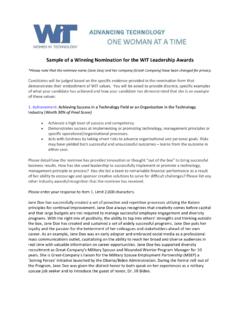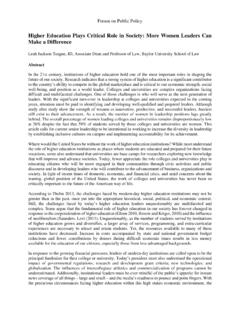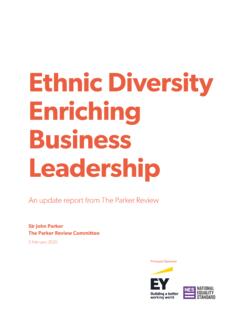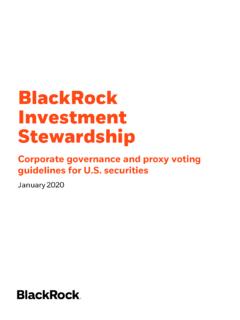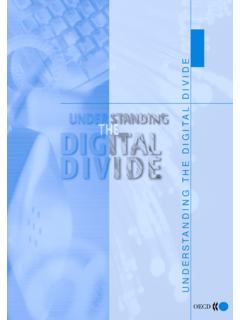Transcription of Waiter, is that inclusion in my soup? A new recipe to ...
1 Research reportSydney launch: May 2013 Waiter, is that inclusion in my soup? A new recipe to improve business performanceContentsDeloitte Australia (Deloitte) and the Victorian Equal Opportunity and Human Rights Commission are proud to launch Waiter, is that inclusion in my soup? A new recipe to improve business performance. This joint initiative reflects our shared view that a focus on diversity and inclusion is both a business and fairness wish to thank the three diverse Australian businesses that participated in this research project, and of course the 1,550 employees who responded to Deloitte s Diversity, inclusion and Business Performance survey. Their generosity means that Australian organisations, both private and public, can accelerate their own business performance through diversity and inclusion . Our innovative research charts new territory and hence, to some degree, it is a work in progress. Our aim in releasing it now is to help re-orient businesses away from their greater level of attention to diversity compared with inclusion , not realising that both are equally critical for business success.
2 In addition to the bias towards diversity, we also see a lack of certainty about the concept of inclusion (hence the question: Waiter, is that inclusion in my soup?). Our research identifies the key indicators and drivers of inclusion , and thus helps pave the way for practical Swiegers (CEO, Deloitte Australia) Karen Toohey (Victorian Equal Opportunity and Human Rights Acting Commissioner) Joint forewordOpening up the cookbook to the first page 1 Cooking up a storm 5 inclusion the missing ingredient 11I want some soup too 14A few practical ideas 20 Final words 24 Methodology and contacts 26 Waiter, is that inclusion in my soup? 1 Opening up the cookbook to the first page2 The pressure is onDoing more with less, fiscal pressure and constraint, uncertainty, still common themes for organisations across the globe in 2012/2013. It has shaken our confidence1 and clarity of response. Unexpectedly diversity and inclusion are emerging as beacons of hope.
3 A little farfetched? Our ground-breaking research in three diverse workplaces (manufacturing, retail and healthcare) demonstrates the tangible uplift in business performance when employees think that their workplace is highly committed to, and supportive of, diversity and they feel highly included. If you are still sceptical, then here is the ultimate punch line. When Deloitte modelled the relationship between diversity and inclusion and business performance, we identified an uplift of 80% when both conditions were high. More specifically, employees who perceive their organisation is committed to, and supportive of, diversity and who feel included, are 80% more likely to believe they work in a high performing organisation, in comparison to a workplace perceived as having low commitment and support for diversity and employees not feeling included. Even when there is high diversity and low inclusion , or low diversity and high inclusion , the business outcomes are never as impressive as the high diversity and high inclusion knew we were onto something, but this result stopped us in our tracks.
4 So we modelled customer service, innovation and engagement. Same deal, perceptions of business outcomes are always significantly higher with high diversity and high inclusion . Clearly the relationship is not a wildcard. These data lead us to argue that a greater focus on diversity and inclusion and knowing what this really means from a practical point of view is the way forward. Taking a step moving forwardIn order to contextualise this research, we first need to take a step back. Of course the starting point for a general diversity and inclusion story is open to robust debate (turn of the century? The 60s?), so let s just stick with what we have observed over the past three years of significant change. Around 2010, a host of countries started introducing measures ( legislation) to increase female representation on boards2. Contemporaneously, business leaders were reflecting on the Global Financial Crisis and business failures, both in terms of antecedents and preventative measures.
5 Decision-making and bias was a common area of discussion across both domains. The impact of the simultaneous exploration of these complex issues by brilliant minds from diverse disciplines, and the demand from business for immediate effective interventions, has been a catalyst for deep insights and change. Deloitte captured some of these insights in previous thought leadership articles3. These analyses not only helped Deloitte to understand and synthesise the plethora of new ideas, but also to identify knowledge and practice gaps. Firstly, we observed that organisations gave much more weight to diversity than inclusion , and yet the research pointed to diversity + inclusion = improved business performance. Secondly we observed that academics and workplace experts struggled to articulate a clear definition of inclusion . Our hunch was that if organisations failed to get the diversity and inclusion balance right, and to increase their focus on inclusion , then the game-changing potential of this moment in time would be lost.
6 Setting the scene1 Deloitte Australia, The CFO Survey Q3 2012: Proceed with caution 2 Deloitte Touche Tohmatsu (2011) women in the boardroom : A global perspective3 Leadership: Do men and women do it differently? (2011); Working in an ideological echo chamber? Diversity of thought as a breakthrough strategy (2011); Only skin deep? Re-examining the business case for diversity (2011) and Inclusive leadership: Will a hug do? (2012)Our hunch was that if organisations failed to get the diversity and inclusion balance right, and to increase their focus on inclusion , then the game-changing potential of this moment in time would be lostWaiter, is that inclusion in my soup? 3So to move forward, we suggest a new recipe for success in which there is an equal focus on diversity and inclusion , facilitated by a clear understanding of the concept of inclusion and its drivers. That s what this report, Waiter, is that inclusion in my soup? A new recipe to improve business performance, is all about.
7 DiversityInclusionImproved business outcomesProviding clarity of understandingRebalancing the overweighting of attentionProviding specificity of outcomes4 Diversity + inclusion = improved business performanceWhen employees think their organisation is committed to, and supportive of diversity and they feel included, employees report better business performance in terms of ability to innovate, (83% uplift) responsiveness to changing customer needs (31% uplift) and team collaboration (42% uplift). Organisations need to increase their focus on inclusionRebalancing the focus on diversity and inclusion , rather than prioritising diversity, will enable organisations to unleash their diversity potential. This means that if an organisation has overweighted their attention to diversity, additional effort is needed to focus on inclusion . inclusion is tangibleThe concept of inclusion incorporates both an active process of change (verb: to include) and an emotional outcome (I feel included).
8 More specifically, feelings of inclusion are driven by perceptions of (i) fairness and respect and (ii) value and belonging. These two elements build upon one another sequentially. Work-life balance is a key signalAn employee s ability to balance their work-life commitments is a key driver of an employee s feeling of signals that an employee is seen as a whole person with a life within and outside the workplace. Work-life balance is also read as a signal of the organisation s support for directs an organisation s biggest bang for buckData can help organisations direct their efforts to unleash the diversity and inclusion potential with greater precision and confidence. The starting point is collecting organisation specific data to identify the change interventions which will deliver the biggest bang for buck. Key findingsWaiter, is that inclusion in my soup? 5 Cooking up a storm6 Charting a new directionAs noted in the foreword, this research is exploratory and to some degree a work in progress.
9 That means that whilst we have a long wish list of outcomes and indicators of business performance, this research covers only some and is weighted towards employee perceptions. Nevertheless, these employee insights are compelling as it is reasonable to assume that they have a clear view of workplace operations from the inside. In terms of perceptual indicators, we asked employees about their views on the end goal, namely business performance (Q: I work in a high performing organisation). A picture tells a thousand words: when employees think that their organisation is highly committed to, and supportive of diversity, and they feel highly included, then they are 80% more likely to agree that they work in a high performing organisation than if they perceive low support and commitment for diversity and low inclusion . Compare the statistically significant difference between the bottom left quadrant (the baseline of low diversity and low inclusion , which we have named 1x) with the top right quadrant (high diversity and high inclusion ).
10 This outcome is coming from a low base, but what if an organisation is already demonstrably committed to diversity? Performance could still improve, and in these circumstances the uplift potential of a dual diversity + inclusion focus is 31% (compare the top left and top right quadrants).Figure 1Q: I work in a high performing organisation A picture tells a thousand words: when employees think their organisation is highly committed to, and supportive of diversity, and they feel highly included, then they are 80% more likely to agree that they work in a high performing Diversity inclusion High High Low Low High performing organisation The uplift The end goal 1x Waiter, is that inclusion in my soup? 7So what were employee s thinking about when they evaluated their organisation s performance? Understanding their frames of reference gives us more confidence in their appraisal, especially when we found that they were looking at performance indicators in their direct line of sight, namely: 1.










